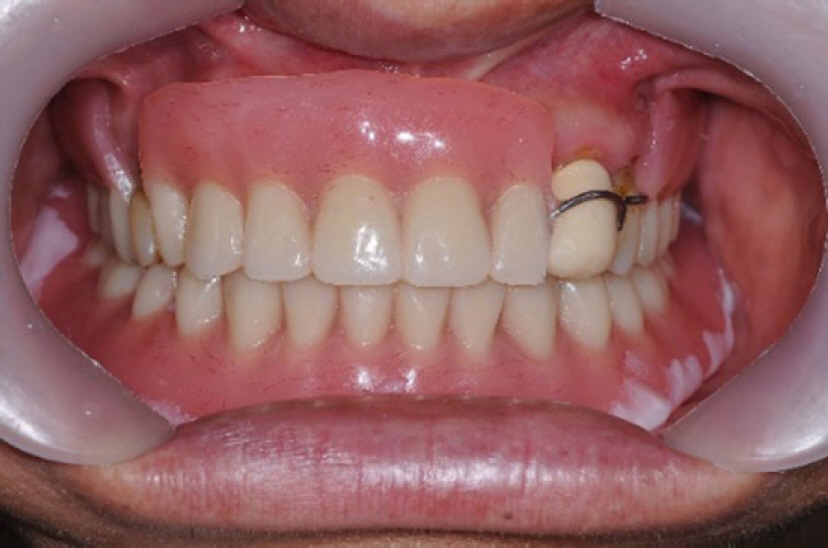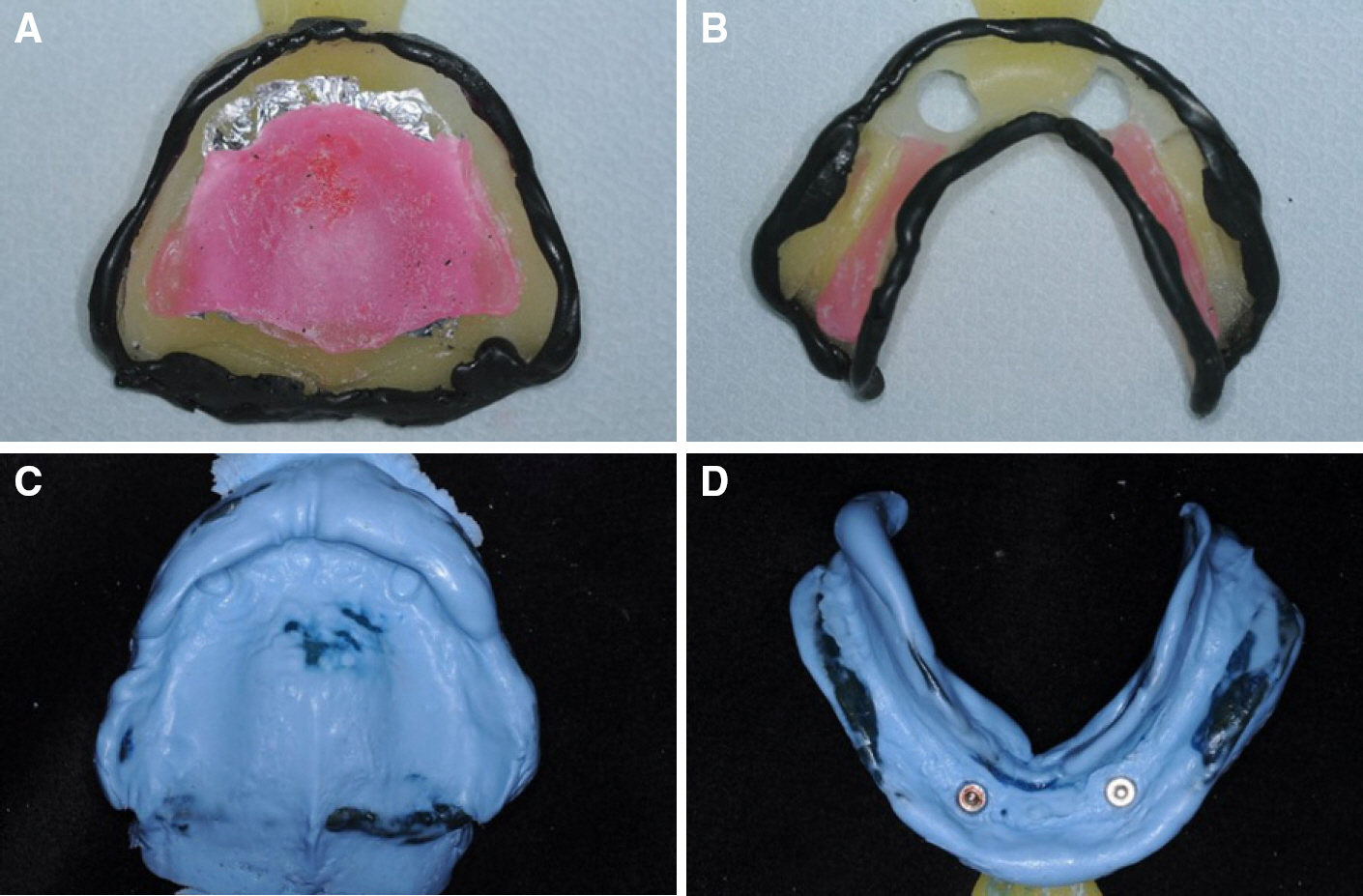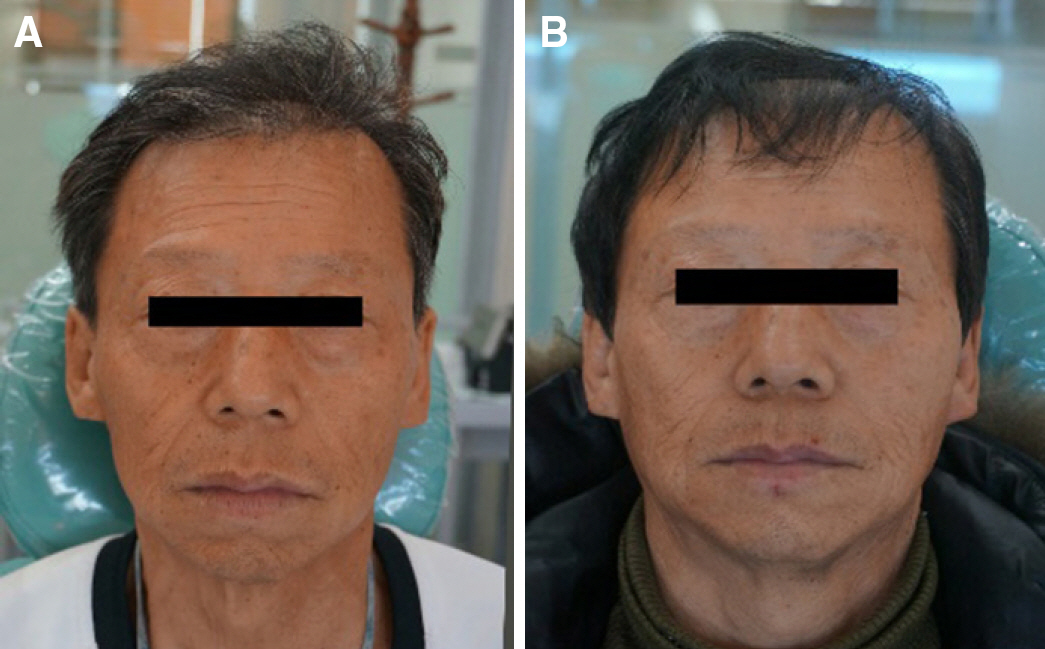J Korean Acad Prosthodont.
2015 Oct;53(4):352-358. 10.4047/jkap.2015.53.4.352.
Overdentures of the patient with Parkinson's disease: A case report
- Affiliations
-
- 1Department of Prosthodontics, School of Dentistry, Chonnam National University, Gwangju, Republic of Korea. mcnihil@jnu.ac.kr
- KMID: 2118808
- DOI: http://doi.org/10.4047/jkap.2015.53.4.352
Abstract
- The retention of complete dentures in patients with Parkinson's disease is often poor due to their constant dislodgement by involuntary movements of the tongue and lips. Furthermore, insertion of the overdenture is expected to be difficult due to their limited voluntary movements. This case is about the bimaxillary overdenture restoration where its retention and stability are improved, using magnetic attachment of remained roots of maxilla and two implant Locator(R) attachments of mandible in patients with Parkinson's disease. This report describes the fabrication of this functionally improved prosthesis.
Keyword
MeSH Terms
Figure
Cited by 1 articles
-
Implant overdenture of mandible with severe unilateral atrophy: Report of two cases
So-Yeun Kim, Eun-Young Kwon, Kyoung-Hwa Jung, Hye-Mi Jeon, Young-Jae Baek, Mi-Jung Yun, Jung-Bo Huh
J Korean Acad Prosthodont. 2019;57(3):271-279. doi: 10.4047/jkap.2019.57.3.271.
Reference
-
1. Ko E, Ahn S, Lee S, Park S, Lee RS. Oral rehabilitation with magnetic overdentures for an old patient with complex systemic diseases. J Korean Acad Prosthodont. 2015; 53:150–6.
Article2. Kent G. Effects of osseointegrated implants on psychological and social well-being: a literature review. J Prosthet Dent. 1992; 68:515–8.
Article3. Awad MA, Lund JP, Dufresne E, Feine JS. Comparing the efficacy of mandibular implant-retained overdentures and conventional dentures among middle-aged edentulous patients: satisfaction and functional assessment. Int J Prosthodont. 2003; 16:117–22.4. Kim SU. Implant-supported removable prosthetic treatments with patient focus. Myungmoon: Seoul;2007.5. Hing R, Daly C. Case report: Magnetically-retained overdenture for a patient with cerebral palsy. Aust Occup Ther J. 1985; 32:17–22.
Article6. Packer M, Nikitin V, Coward T, Davis DM, Fiske J. The potential benefits of dental implants on the oral health quality of life of people with Parkinson' s disease. Gerodontology. 2009; 26:11–8.7. Brewer AA, Morrow RM. Overdentures. 2nd ed.Mosby;1980. p. 4–10.8. Vrijhoef MM, Mezger PR, Van der Zel JM, Greener EH. Corrosion of ferromagnetic alloys used for magnetic retention of overdentures. J Dent Res. 1987; 66:1456–9.
Article9. Angelini E, Pezzoli M, Zucchi F. Corrosion under static and dy-namic conditions of alloys used for magnetic retention in dentistry. J Prosthet Dent. 1991; 65:848–53.
Article10. Drago CJ. Tarnish and corrosion with the use of intraoral magnets. J Prosthet Dent. 1991; 66:536–40.
Article11. Kitsugi A, Okuno O, Nakano T, Hamanaka H, Kuroda T. The corrosion behavior of Nd2Fe14B and SmCo5 magnets. Dent Mater J. 1992; 11:119–29.
Article12. Kuoppala R, Nä pä nkangas R, Raustia A. Quality of Life of Patients Treated With Implant-Supported Mandibular Overdentures Evaluated With the Oral Health Impact Profile (OHIP-14): a Survey of 58 Patients. J Oral Maxillofac Res. 2013; 4:e4.
Article13. Fontijn-Tekamp FA, Slagter AP, Van Der Bilt A, Van' T Hof MA, Witter DJ, Kalk W, Jansen JA. Biting and chewing in overdentures, full dentures, and natural dentitions. J Dent Res. 2000; 79:1519–24.
Article14. Schneider AL, Kurtzman GM. Restoration of divergent free-standing implants in the maxilla. J Oral Implantol. 2002; 28:113–6.
Article
- Full Text Links
- Actions
-
Cited
- CITED
-
- Close
- Share
- Similar articles
-
- Overdenture with magnetic attachments for a patient with Parkinson's disease: a case report
- Clozapine in the Treatment of Dopaminergic Psychosis in Patient with Parkinson's Disease: A Case Report
- The Effects of Zolpidem on Akinesia in a Parkinson Disease Patient: A Case Report
- Fabrication of implant supported overdenture using existing implants: a case report
- An Anesthetic Management of a Patient with Parkinson's Disease Who Underwent Whipple's Operation by Enteral Levodopa Administration














